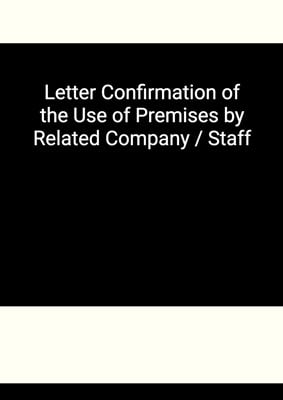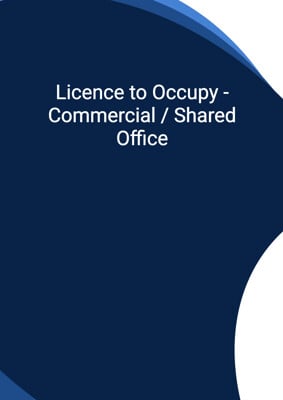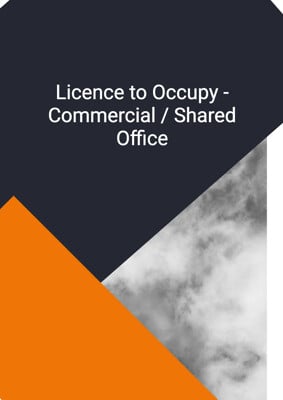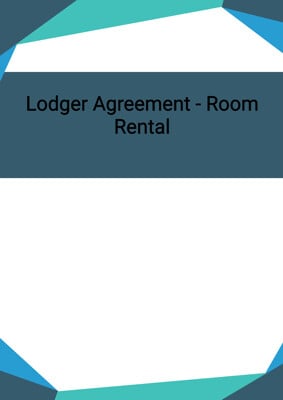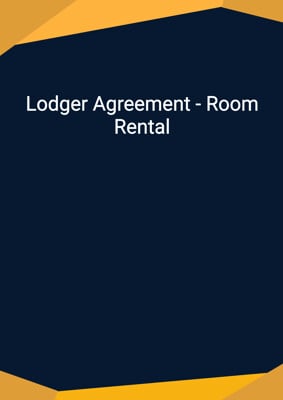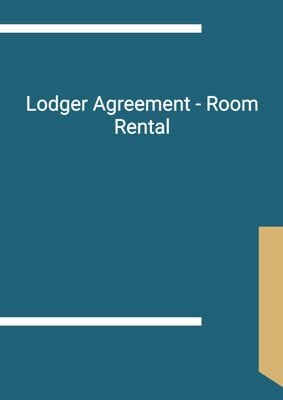
Licence to Occupy - Commercial / Shared Office
Neutral
Licence giving the licensee the right to occupy the commercial property for a defined length of time. A licensee has only a personal interest and this interest can be revoked by the landowner at any time. This is a shared office arrangement drafted in neutral form.
How to Tailor the Document for Your Need?
01
Create Document
Fill in the details of the parties. You can click the "Fill with Member’s Information" button to complete it with information saved to your account.
02
Fill Information
Please fill in any additional information by following the step-by-step guide on the left hand side of the preview document and click the "Next" button.
03
Get Document
When you are done, click the "Get Document" button and you can download the document in Word or PDF format.
04
Review Document
Please get all parties to review the document carefully and make any final modifications to ensure that the details are correct before signing the document.
Document Preview
Document Description
The document titled 'Licence to Occupy - Commercial / Shared Office' is a legally binding agreement between two parties, namely the licensor and the licensee. The document grants the licensee the personal permission to use a designated desk and/or office space at a specific premises for a defined term. The detailed description of the document is as follows:
Introduction:
The document begins by stating the purpose and agreement between the licensor and the licensee. It highlights the importance of the document as a legally binding contract that outlines the terms and conditions of the license to occupy the commercial/shared office space.
Section 1: Licence
This section provides a detailed description of the license granted by the licensor to the licensee. It specifies the designated space, premises, and the term of the license. It also mentions the commencement and end dates of the license.
Section 2: Licence Fee
This section outlines the payment terms and conditions related to the license fee. It specifies the currency, rent, and payment schedule. It also mentions the consequences of non-payment, including daily interest and the possibility of termination by the licensor.
Section 3: Deposit
This section explains the requirements and conditions related to the deposit. It specifies the amount, payment timeline, and the circumstances under which the deposit may be forfeited or refunded.
Section 4: Other Charges
This section details the additional charges included in the license fee, such as the right to occupy the space, use of facilities, cleaning, and insurance. It also mentions the possibility of additional charges based on consumption.
Section 5: Licensor's Responsibilities
This section outlines the responsibilities of the licensor, including ensuring the legality of the premises, maintaining the premises in tenantable condition, and repairing structural parts.
Section 6: Licensee's Responsibilities
This section specifies the responsibilities of the licensee, such as prompt payment of fees, using the space for office purposes only, keeping the space clean and tidy, and indemnifying the licensor against any loss or damage.
Section 7: Termination of the Licence
This section explains the circumstances under which the licensor may terminate the license, including non-payment, bankruptcy/insolvency, material breach, or mutual agreement. It also mentions the rights of the licensor to deduct outstanding payments from the deposit.
Section 8: Licence Not a Lease
This section clarifies that the license is a personal right and cannot be assigned, shared, or disposed of. It emphasizes that the licensee does not have the same rights as a tenant under a lease agreement.
Section 9: Miscellaneous
This section includes various miscellaneous provisions, such as the entire agreement between the parties, the validity of the remaining provisions if any provision is deemed void or unenforceable, and the waiver of breach.
Section 10: No Rights Under Contracts for Third Parties
This section states that third parties do not have the right to enforce any terms of the license.
Section 11: Law and Jurisdiction
This section specifies the governing law and jurisdiction applicable to the document. It emphasizes the parties' commitment to resolving disputes amicably and submitting to the exclusive jurisdiction of the courts.
Section 12: Notices and Service
This section explains the methods and timelines for serving notices between the parties. It includes provisions for delivery by hand, email, or post, and provides the addresses and contact details of the licensor and licensee.
Conclusion:
The detailed description provides a comprehensive overview of the document, highlighting its importance as a legally binding agreement between the licensor and the licensee. It covers all sections and key provisions, ensuring a clear understanding of the terms and conditions outlined in the document.
How to use this document?
To effectively use the 'Licence to Occupy - Commercial / Shared Office' document, follow the step-by-step guidance below:
1. Provide information: Enter the names and principal places of business of both the licensor and the licensee in the agreement. This ensures clear identification of the parties involved.
2. Specify the license details: Clearly state the designated desk and/or office space, as well as the premises where the licensee will occupy. Define the term of the license, including the commencement and end dates.
3. Determine the license fee: Agree on the currency, rent, and payment schedule for the license fee. Ensure that the licensee understands the inclusion of fixtures, fittings, equipment, and other items in the fee.
4. Arrange for the deposit: Specify the amount and payment timeline for the deposit. Clarify the conditions under which the deposit may be forfeited or refunded.
5. Understand additional charges: Discuss and agree upon any additional charges, such as consumption-based charges, management fees, government rates, and rent. Ensure that the licensee is aware of their responsibility for these charges.
6. Review responsibilities: Clearly communicate the responsibilities of both the licensor and the licensee. Emphasize the importance of prompt payment, maintaining cleanliness, and indemnifying the licensor against any loss or damage.
7. Familiarize with termination conditions: Understand the circumstances under which the licensor may terminate the license, such as non-payment, bankruptcy/insolvency, or material breach. Be aware of the licensor's rights to deduct outstanding payments from the deposit.
8. Acknowledge license limitations: Recognize that the license is a personal right and cannot be assigned, shared, or disposed of. Understand that the licensee does not have the same rights as a tenant under a lease agreement.
9. Consider miscellaneous provisions: Read and understand the miscellaneous provisions, such as the entire agreement, validity of remaining provisions, waiver of breach, and the absence of rights for third parties.
10. Comply with law and jurisdiction: Adhere to the governing law and jurisdiction specified in the document. Make efforts to resolve any disputes amicably and in good faith.
11. Follow notice and service procedures: Serve notices in accordance with the specified methods and timelines. Ensure that the addresses and contact details of both parties are accurate.
12. Seek legal advice if needed: If there are any uncertainties or concerns regarding the document, consult with a legal professional to ensure full compliance and understanding.
By following these steps, the licensee can effectively use the 'Licence to Occupy - Commercial / Shared Office' document, ensuring a clear understanding of the terms and conditions and minimizing the risk of disputes or misunderstandings.
Not the right document?
Don’t worry, we have thousands of documents for you to choose from:
